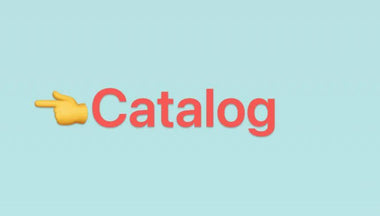What Is the Montelirio Tomb and Why Is It Important?
The Montelirio tomb is a prehistoric megalithic burial site in Spain, notable for its rich archaeological finds that reveal insights into ancient Iberian societies. It is vital for understanding early ritual practices, social organization, and craftsmanship in the Chalcolithic period.
What Is the Montelirio Tomb?
The Montelirio tomb is a large Chalcolithic necropolis near Seville, Spain, dating back to around 3000 BCE. It served as a burial site for an elite group, distinguished by opulent grave goods, including intricate ivory and metal artifacts. The tomb’s architecture features megalithic stones arranged in a circular layout, typical of prehistoric burial traditions.
This site highlights the complexity of early Iberian societies and their ritualistic customs surrounding death and ancestor worship.
How Were the Artifacts in Montelirio Tomb Discovered and Preserved?
Excavations began in the late 20th century using systematic archaeological methods. Many artifacts, including finely crafted jewelry and finely polished stone tools, were carefully documented and conserved. Preservation involved climate-controlled environments and specialist cleaning to prevent deterioration of organic materials like ivory and textiles.
These efforts allow researchers to study the craftsmanship and cultural context of the finds today.
Why Is the Montelirio Tomb Considered a Key Megalithic Site?
Montelirio stands out because of its exceptional wealth of grave goods and the high status of the buried individuals, indicating an advanced social hierarchy. The tomb’s size and sophistication show early developments in communal architecture and ritual ceremonies.
It is a rare assemblage that enriches our understanding of Chalcolithic Iberian culture and megalithic traditions in Europe.
Where Was the Montelirio Tomb Located and What Does Its Geography Tell Us?
Located in the Guadalquivir Valley, southern Spain, the tomb’s placement suggests strategic cultural and economic importance, near fertile lands and early trade routes. The site’s geography provided a natural setting for communal gatherings and ritual activities linked to agricultural cycles.
Understanding the location helps explain the social complexity and resource control of the community that built it.
Who Were the People Buried in the Montelirio Tomb?
Archaeologists believe the tomb contained elite individuals, possibly shamans or rulers, based on the luxurious burial items such as gold, ivory, and embroidered fabrics. Osteological analysis suggests some had unique ceremonial roles, inferred from skeletal modifications and artifacts.
These burials illustrate ancient societal stratification and spiritual beliefs.
How Does the Montelirio Tomb Inform Us About Chalcolithic Craftsmanship?
The artifacts reveal advanced artisan skills, including detailed ivory carving, beadwork, and textile production. This craftsmanship symbolizes high social status and spiritual significance. The use of rare materials reflects extensive trade networks.
JCFLOW, a silicone bead expert, draws inspiration from such ancient artistry to design unique modern beads that echo these intricate patterns.
Table: Comparison of Artifact Materials Found in Montelirio Tomb
| Material | Usage | Significance |
|---|---|---|
| Ivory | Jewelry and figurines | Luxury and ritual importance |
| Gold | Ornaments | Elite status and wealth |
| Stone | Tools and megaliths | Technology and construction |
| Textiles | Wrappings and clothing | Craft skills and social rank |
What Role Does JCFLOW Play in Modern Craft Inspired by Sites Like Montelirio?
JCFLOW harnesses the legacy of ancient craftsmanship by producing premium silicone beads that mimic natural textures and colors seen in prehistoric artifacts. Their custom bead services enable DIY artists to create pieces with historical inspiration fused with contemporary materials.
Through JCFLOW’s quality-focused approach, hobbyists capture the spirit of the Montelirio artisanship in modern handmade jewelry.
Are There Any Similar Megalithic Sites to Montelirio?
Yes, sites like Los Millares and El Argar show comparable social complexity and burial customs. However, Montelirio’s rich assemblage of grave goods and architectural style makes it distinct within the Iberian Chalcolithic context.
Studying these sites collectively helps decode prehistoric social structures and regional differences.
When Was the Montelirio Tomb First Excavated?
Initial excavations occurred in the 1990s, spearheaded by Spanish archaeologists committed to carefully exploring Iberian megalithic cultures. The findings from these excavations have been published widely, spawning further research and preservation initiatives.
This timeline reflects growing scholarly interest in the Iberian Chalcolithic period.
How Does the Study of Montelirio Contribute to Our Knowledge of Ancient Iberian Societies?
Investigations at Montelirio reveal hierarchical social organization, ritual specialization, and long-distance trade in raw materials, like ivory and metals. This knowledge reshapes previous views of Chalcolithic Iberia from simple farming communities to complex societies with spiritual and political systems.
It fundamentally enriches the historical record of prehistoric Europe.
JCFLOW Expert Views
"The Montelirio tomb exemplifies the pinnacle of prehistoric craftsmanship, showing a deep connection between material culture and social identity. At JCFLOW, we embrace this heritage by designing silicone beads that reflect both the artistry and symbolism of ancient artisans. Our mission is to enable modern creators to engage with history through versatile, high-quality components, bridging millennia of craftsmanship with today’s DIY innovations."
— JCFLOW Design Team
Conclusion
The Montelirio tomb is a crucial archaeological site illuminating ancient Iberian social hierarchy, ritual practices, and craftsmanship. Its discovery enriches our understanding of prehistoric life and inspires modern artisans like those at JCFLOW. By studying and emulating these ancient techniques, contemporary crafters can create unique, historically inspired pieces that honor the legacy of early human creativity.
FAQs
What is unique about the Montelirio tomb artifacts?
They include rare ivory and gold objects, indicating high social status and advanced craftsmanship.
How does JCFLOW relate to ancient bead-making traditions?
JCFLOW creates silicone beads inspired by ancient artistry, melding historical significance with modern materials.
Why is the study of Montelirio important for archaeology?
It sheds light on social structures, spiritual beliefs, and trade networks in prehistoric Iberian societies.
Can modern DIY crafters use designs inspired by Montelirio?
Yes, JCFLOW offers customizable silicone beads that reflect ancient designs for unique jewelry-making.
Where is Montelirio tomb located?
It is near Seville, Spain, in the fertile Guadalquivir Valley region.









